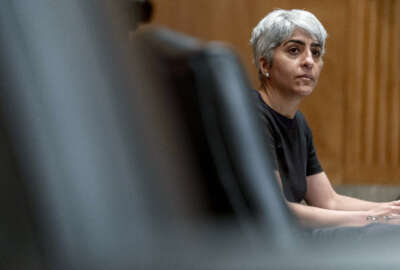
But will new OPM director get the snow day calls right?
Newly confirmed OPM director inherits an agency that you might call a fixer-upper.
Kiran Ahuja is now the Senate-confirmed director of the Office of Personnel Management. But does it matter?
The OPM slot has proven to be an occasionally good federal service advocacy platform. But the agency is built to operate in a zone outside the government’s enduring human capital issues. Challenges like attracting young people to federal service. Retaining people in difficult but crucial jobs. Keeping the workforce engaged.
Ahuja got her job with only half the Senate voting in favor. Vice President Kamala Harris had to break a tie. Republicans chided Ahuja for her association with critical race theory and with writer Ibram X. Kendi, one of its proponents.
I’m not going to wade into that one. But there is a connection. It’s likely that OPM, in the Biden administration and with Ahuja as director, will urge agencies to undertake what for some will be objectionable training, or pursue unorthodox recruitment and hiring practices. Ultimately, regardless of policy, whatever progress agencies actually make in advancing a more diverse or inclusive workforce will occur because of what happens in that agency’s individual recruitment efforts. And not because of what OPM says, or what the White House says.
OPM neither recruits, nor interviews, nor hires anyone except for its own needs. Everyone else gets hired at the individual agency, bureau and unit level. To the extent some agencies have consistently good Federal Employee Viewpoint Survey scores, or do well in having minority employees rise through the ranks to the executive level, they do so because of their own best practices and the commitment of their managers.
That doesn’t mean OPM is of no help. To the contrary, it maintains a vast library of documents detailing personnel policies and hiring authorities. Agencies looking to do anything except a standard type of posted, competitive hire need only to do some research to find the enabling policy. It can offer model policies or frameworks under which agencies can more easily fashion their own strategies for telework or accessibility. These need periodic review and refreshing. It has a large number of people deeply versed in these topics, people whom agencies should use as a resource.
Much has been made by the federal unions, critics of the Trump administration, and the good-government groups of the churn in leadership at OPM. Such churn is a real problem. And of the uncertainty it faced in the last administration’s unsuccessful try at dissolving the agency and spreading its functions to others. That attempt was ham-handed, to be sure. I felt the case could have been made for a strong, lean personnel policy agency, unfettered by operations like security background checks and retirement paperwork.
The background checks did move back to the Defense Department, so Ahuja walks into an agency somewhat sleeker than that of two years ago. It needs TLC.
Here’s what she should do:
- Reiterate in words and policy a commitment to merit systems principals and appropriate treatment of federal employees under Title 5 and other laws, EEO and otherwise, related to federal employment. Everyone is overdue for a snap-to the basics.
- Signal she’s the OPM director for all employees, period. DEI initiatives and training should proceed in such a way as to educate people and foster understanding, not to render the federal employment scene into a sort of Animal Farm. That would be unfair to everyone and patronizing to those who stand to legitimately benefit from such initiatives.
- Pick a couple of tangible projects and get them done, or at least make solid progress. OPM has engagement and morale problems, information technology in need of updating, backlogs in the paper-driven retirement calculation process. OPM is a fixer-upper. Get after it.
Nearly Useless Factoid
By Alazar Moges
William Henry Harrison had the shortest tenure of any president in U.S. history after dying of a cold that turned into pneumonia on April 4, 1841, just 32 days into his presidency.
Source: White House
Copyright © 2025 Federal News Network. All rights reserved. This website is not intended for users located within the European Economic Area.
Tom Temin is host of the Federal Drive and has been providing insight on federal technology and management issues for more than 30 years.
Follow @tteminWFED




